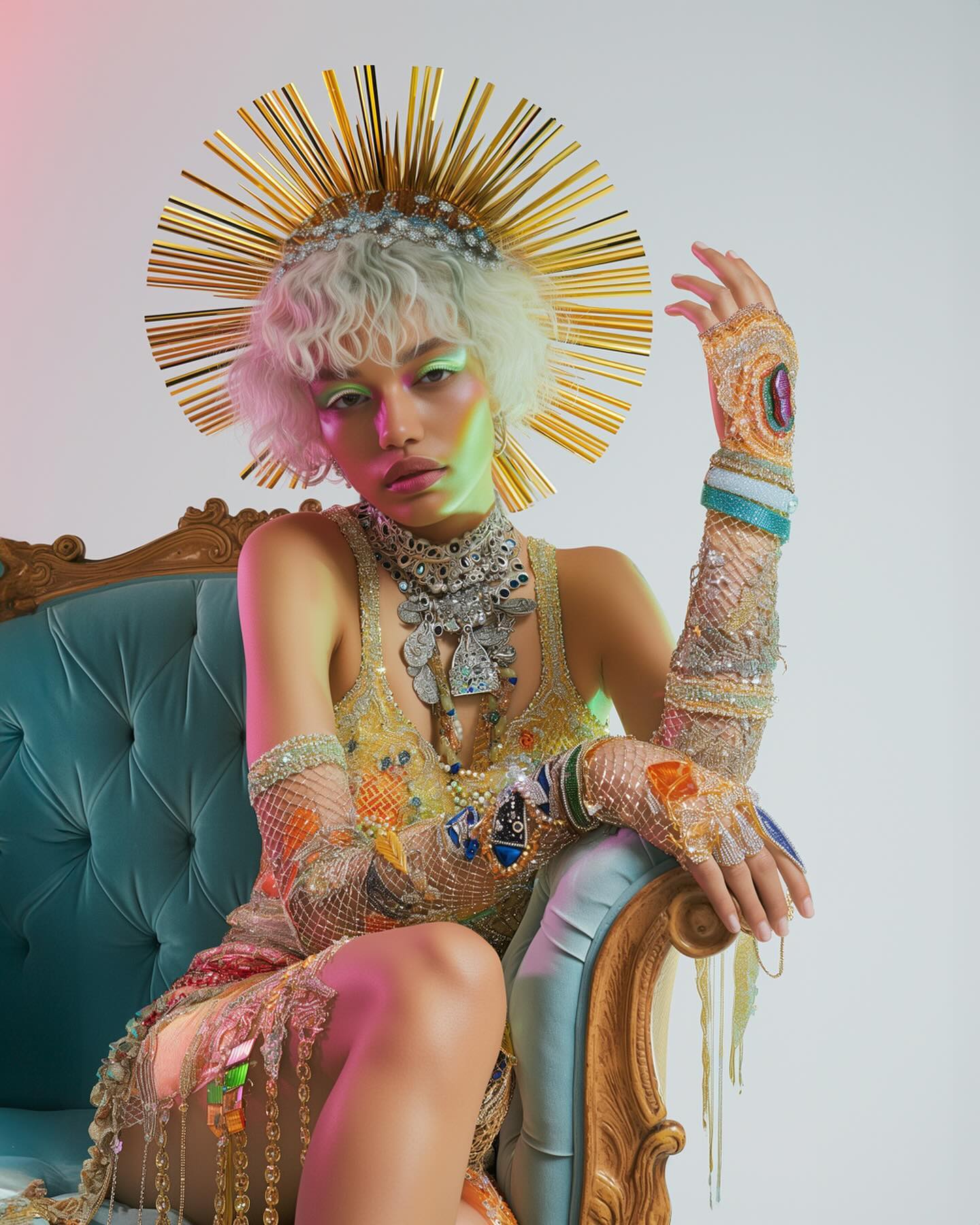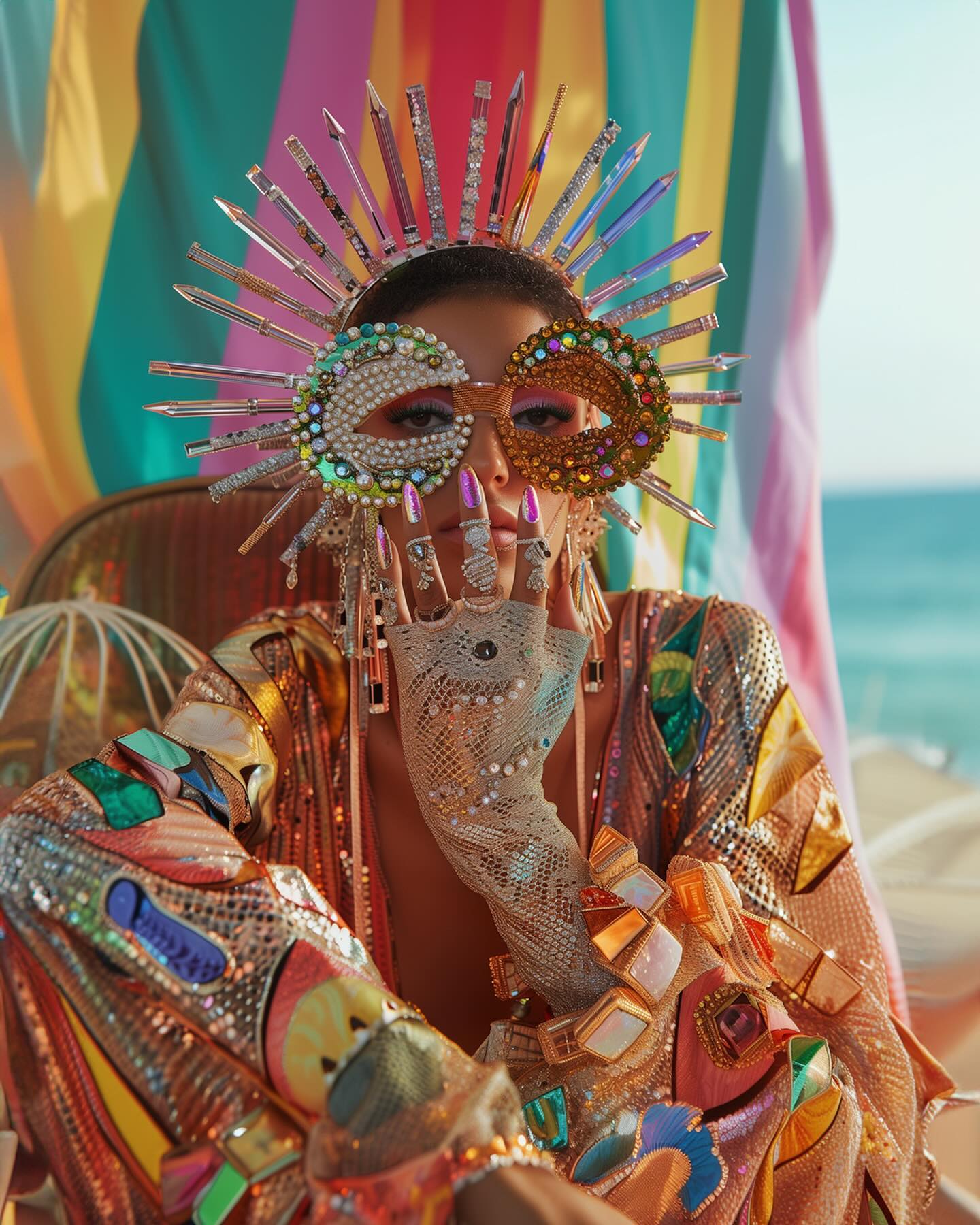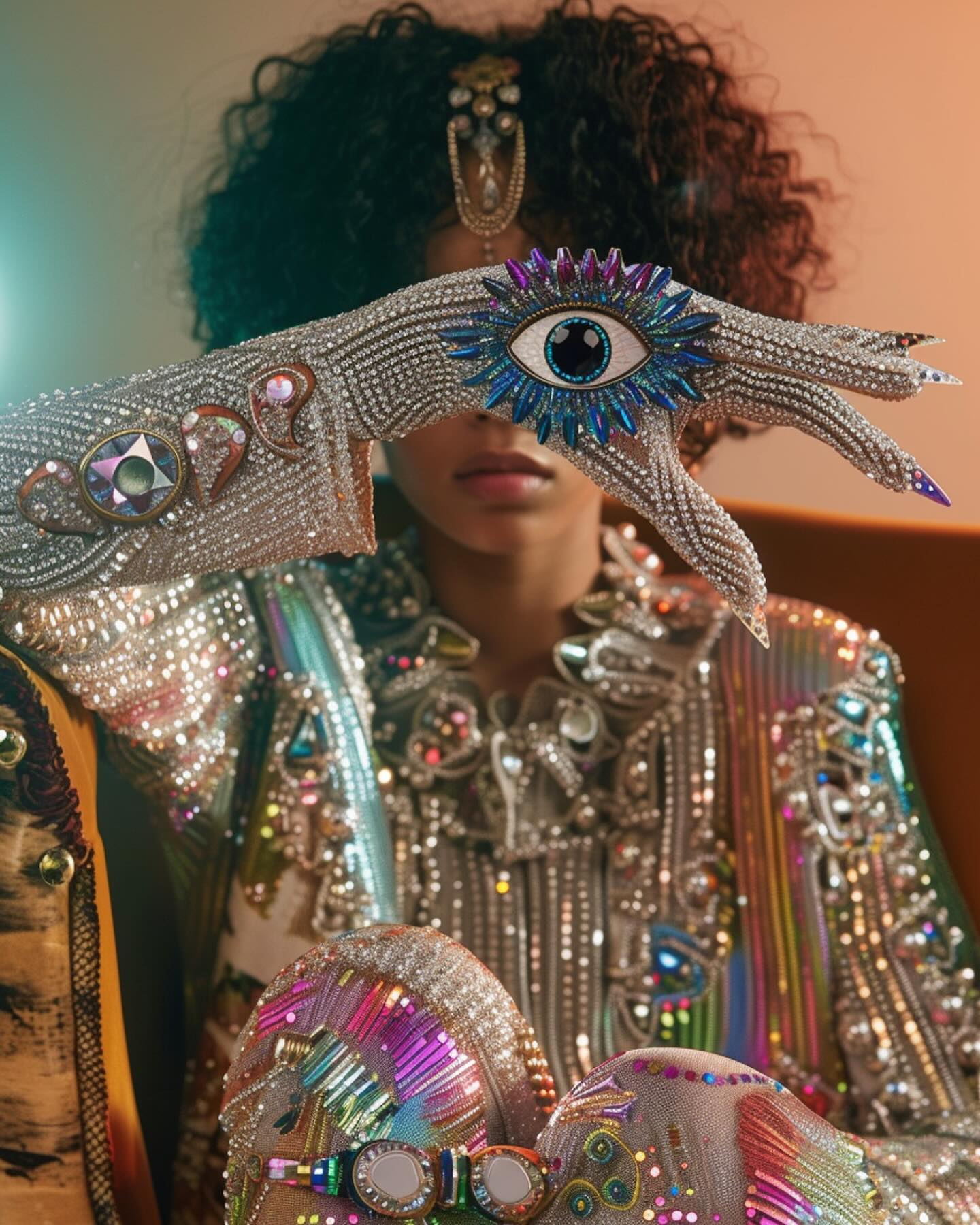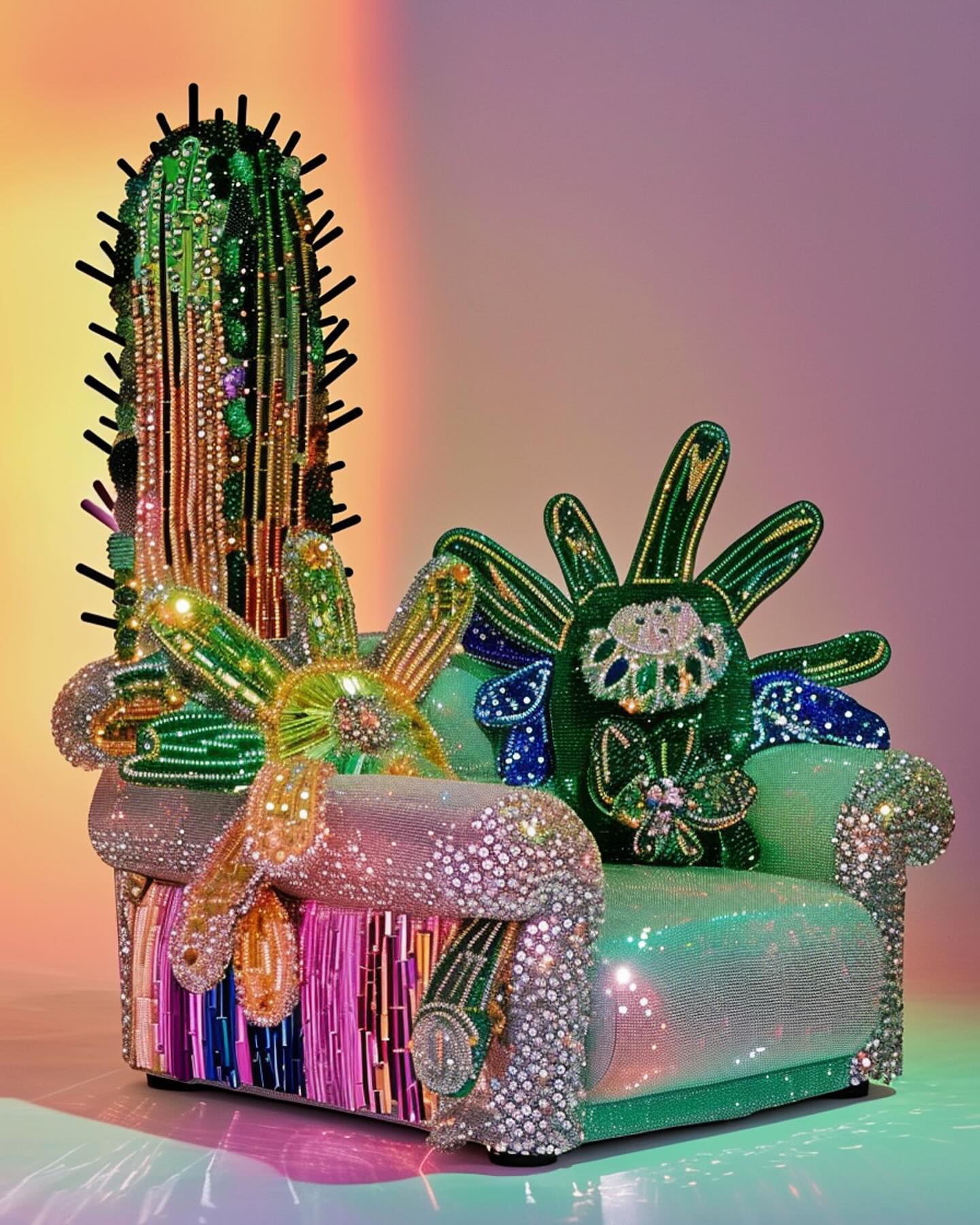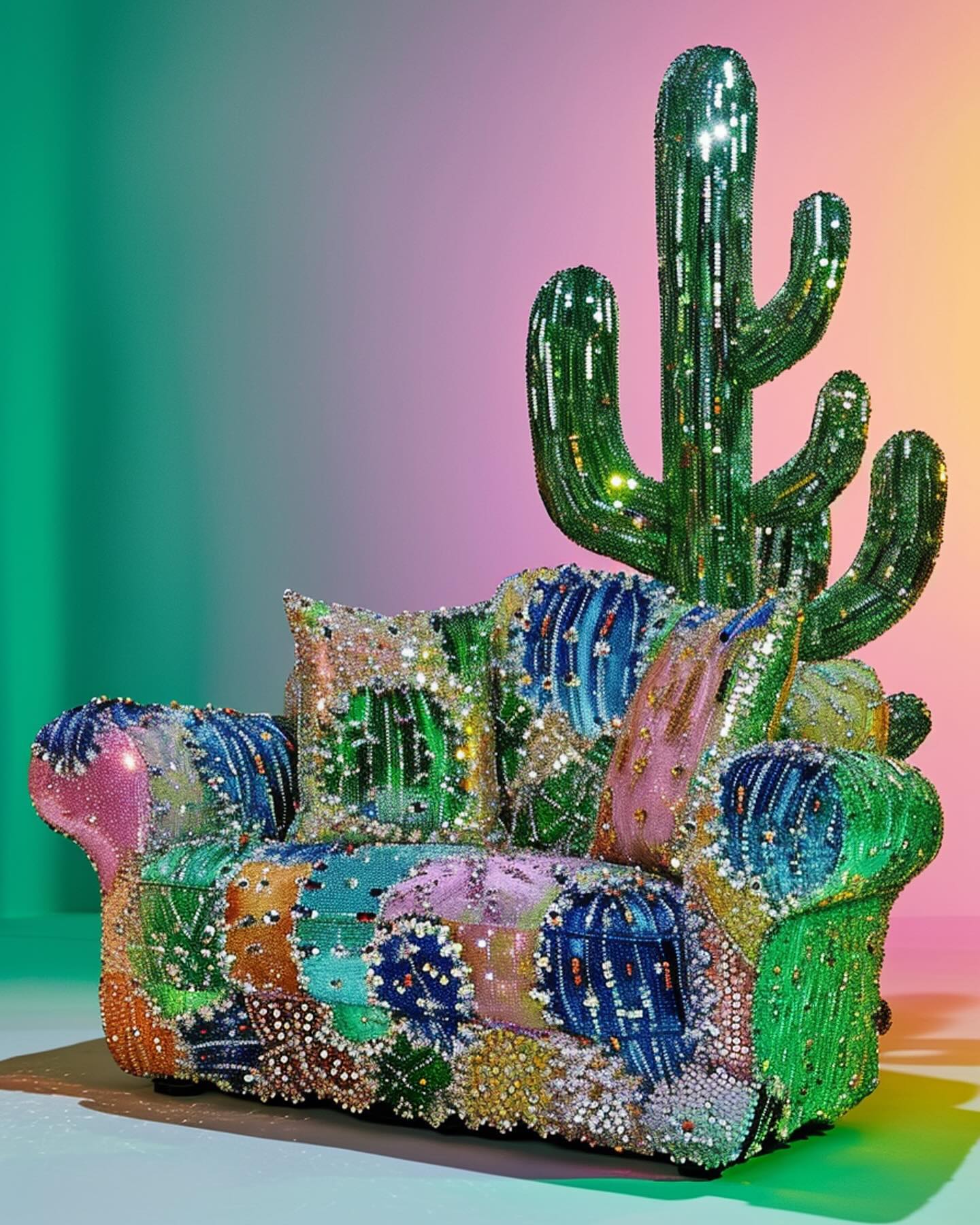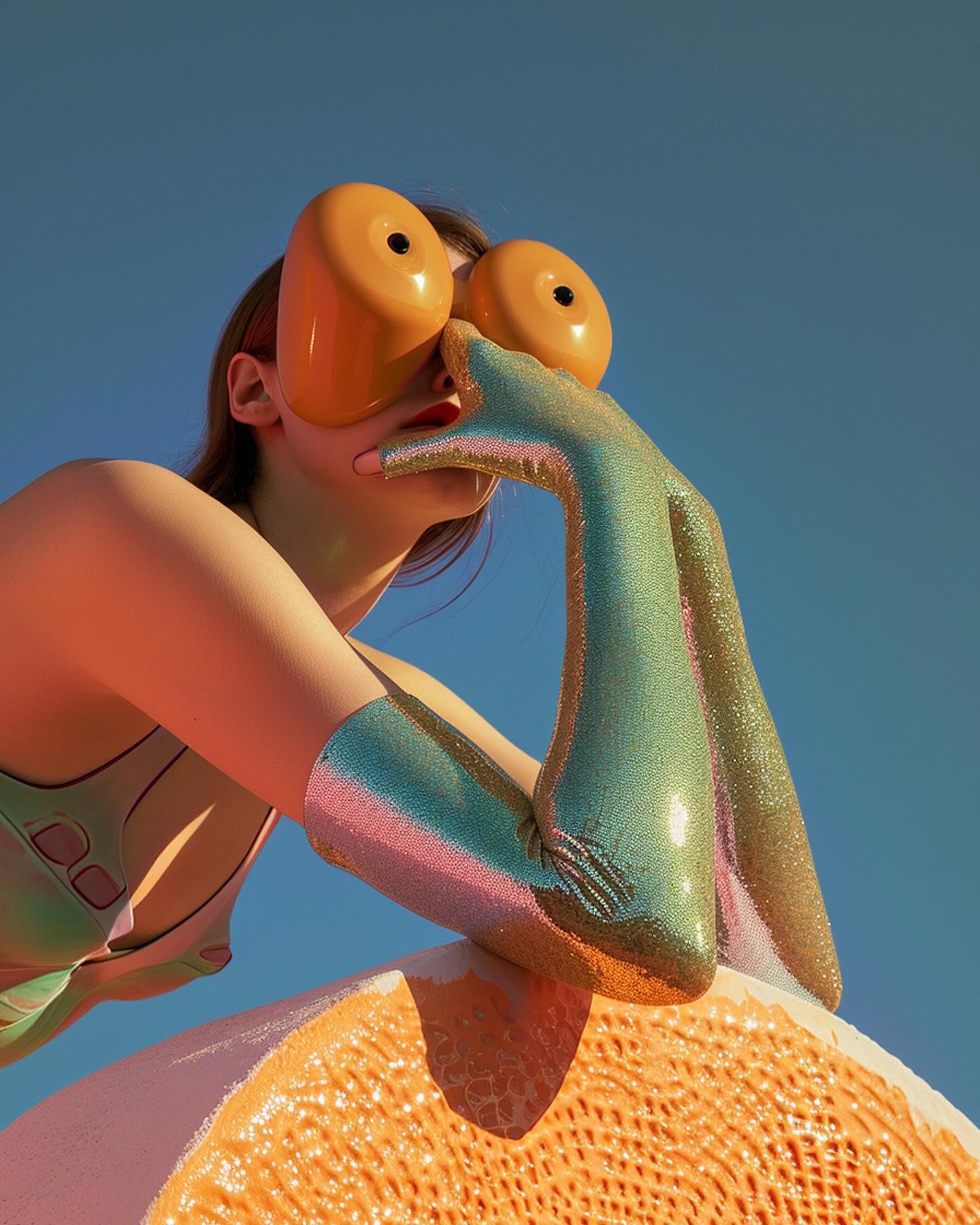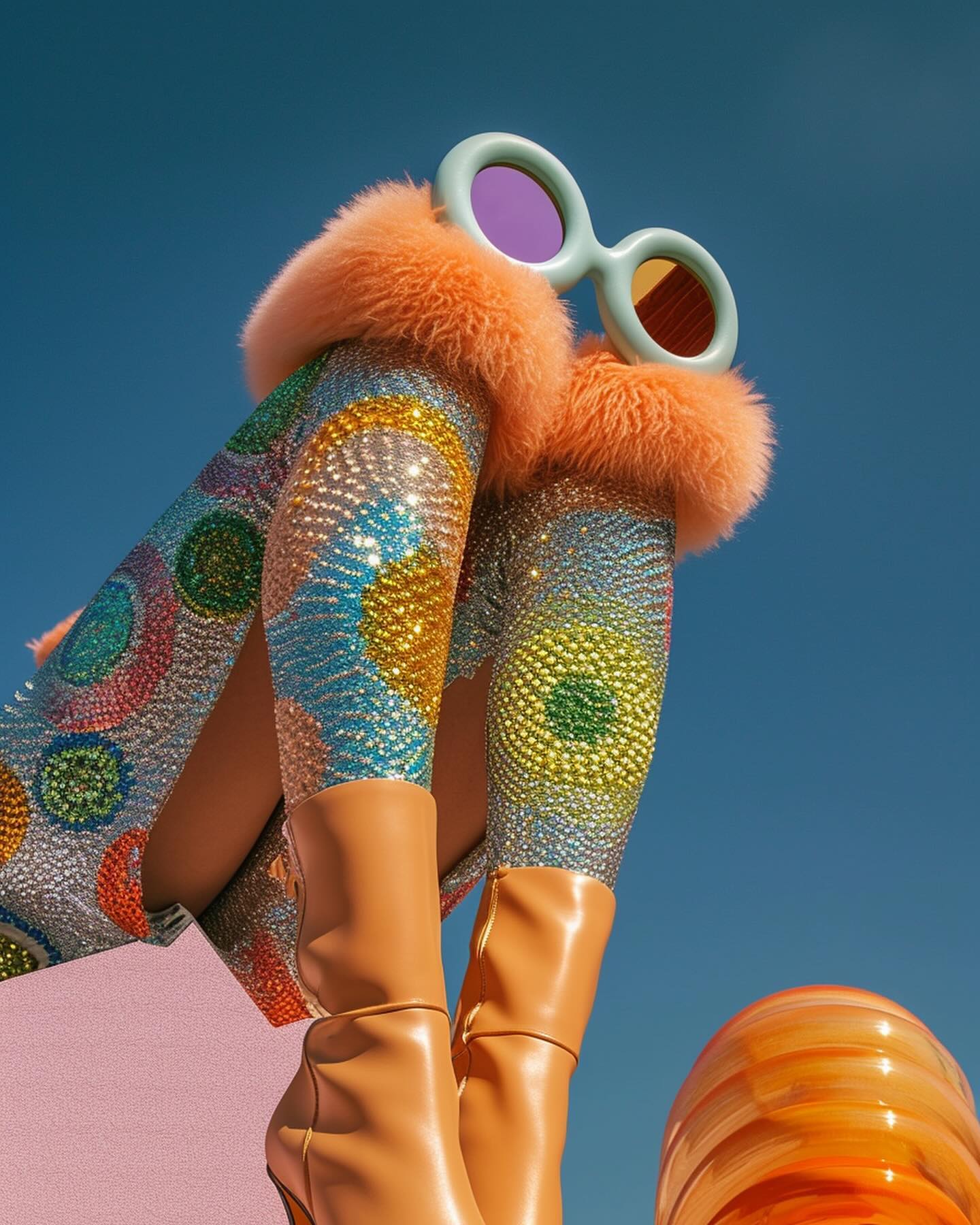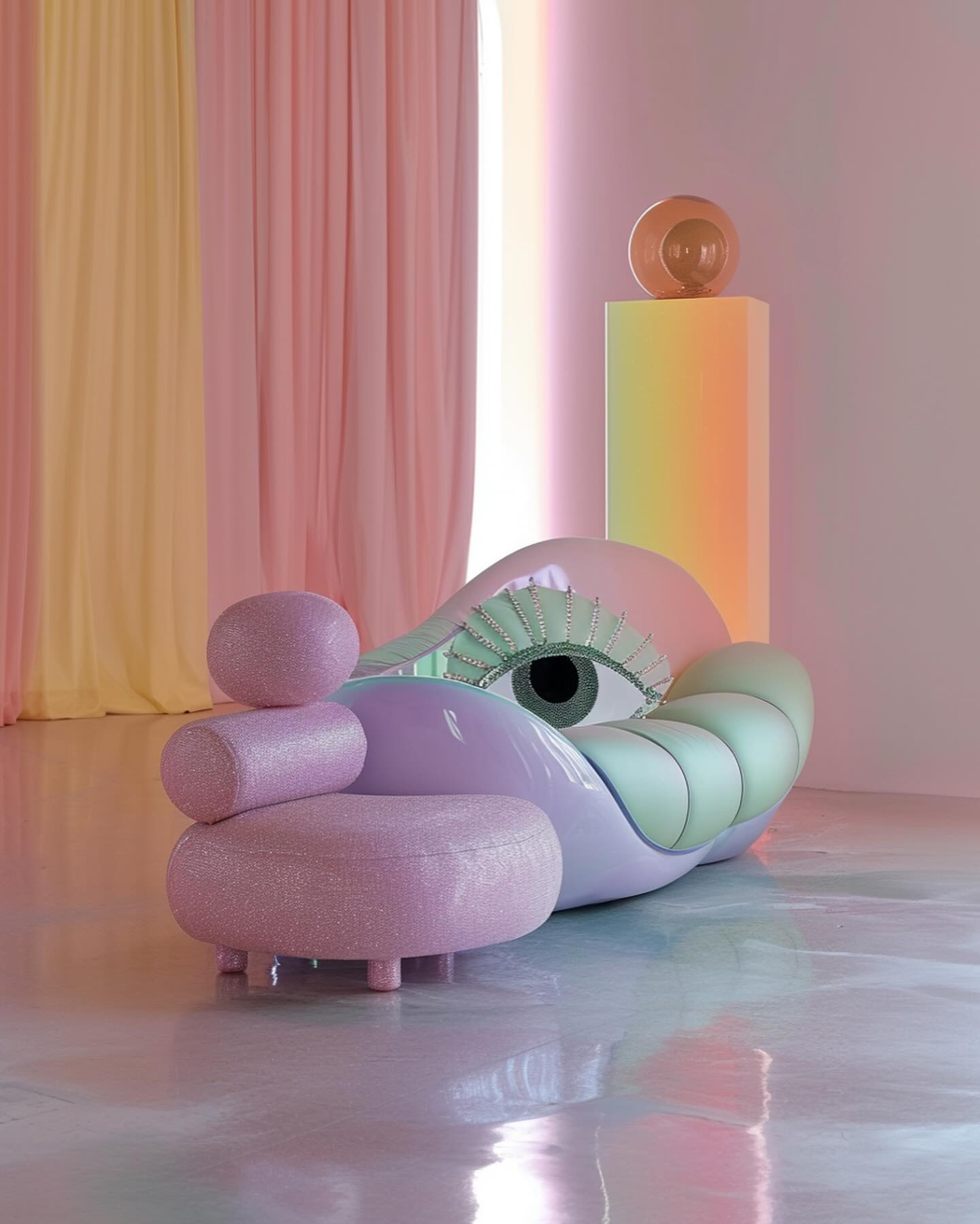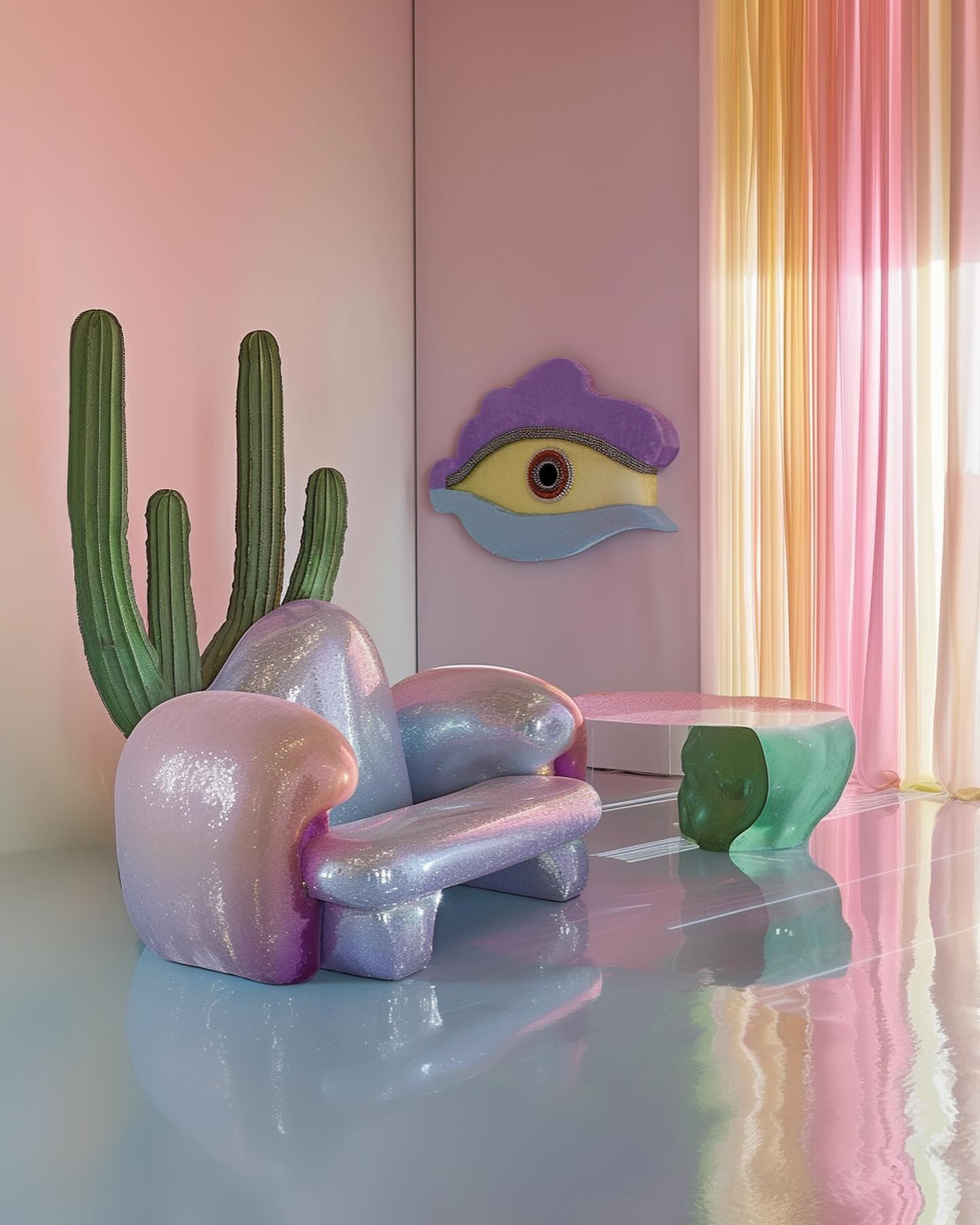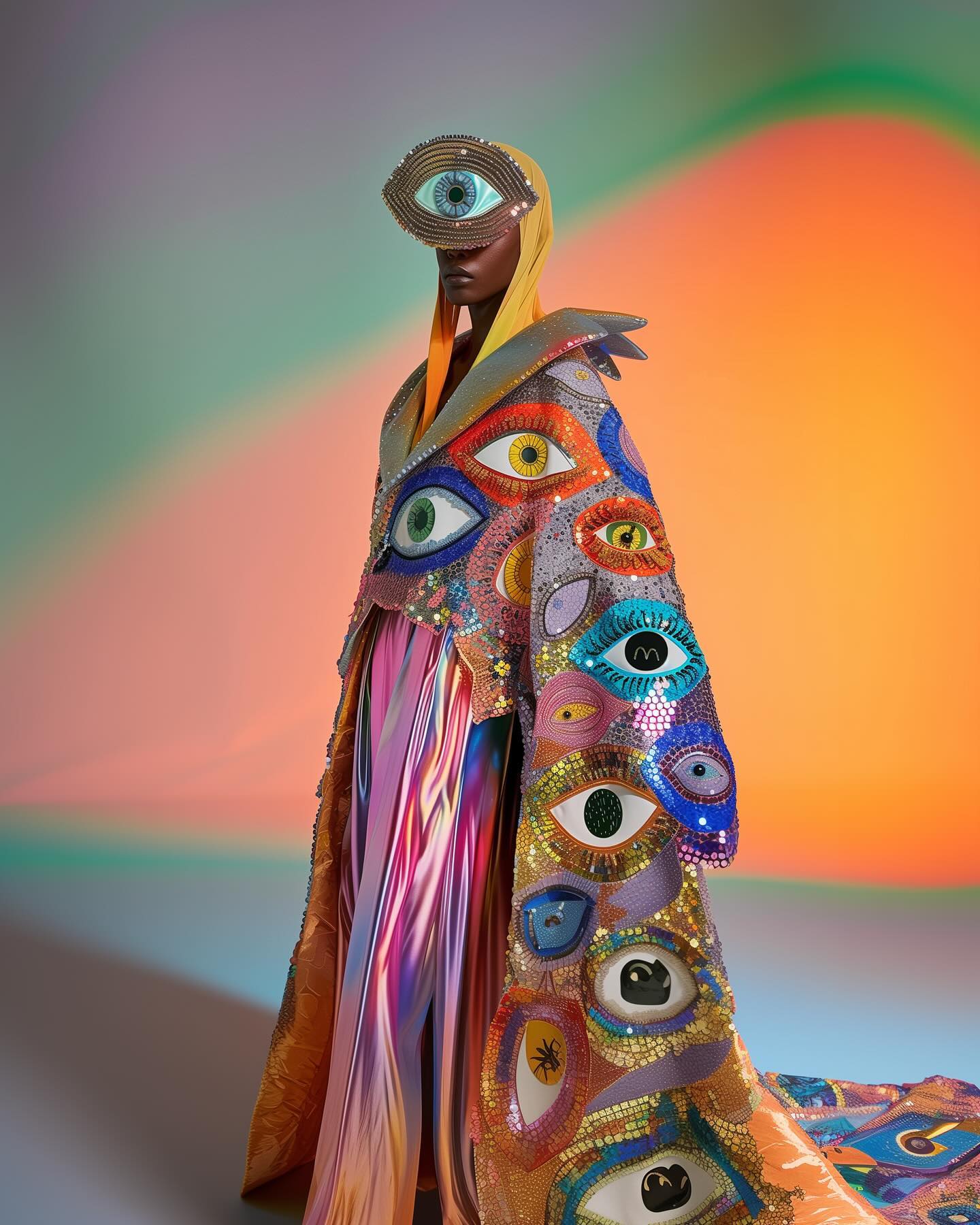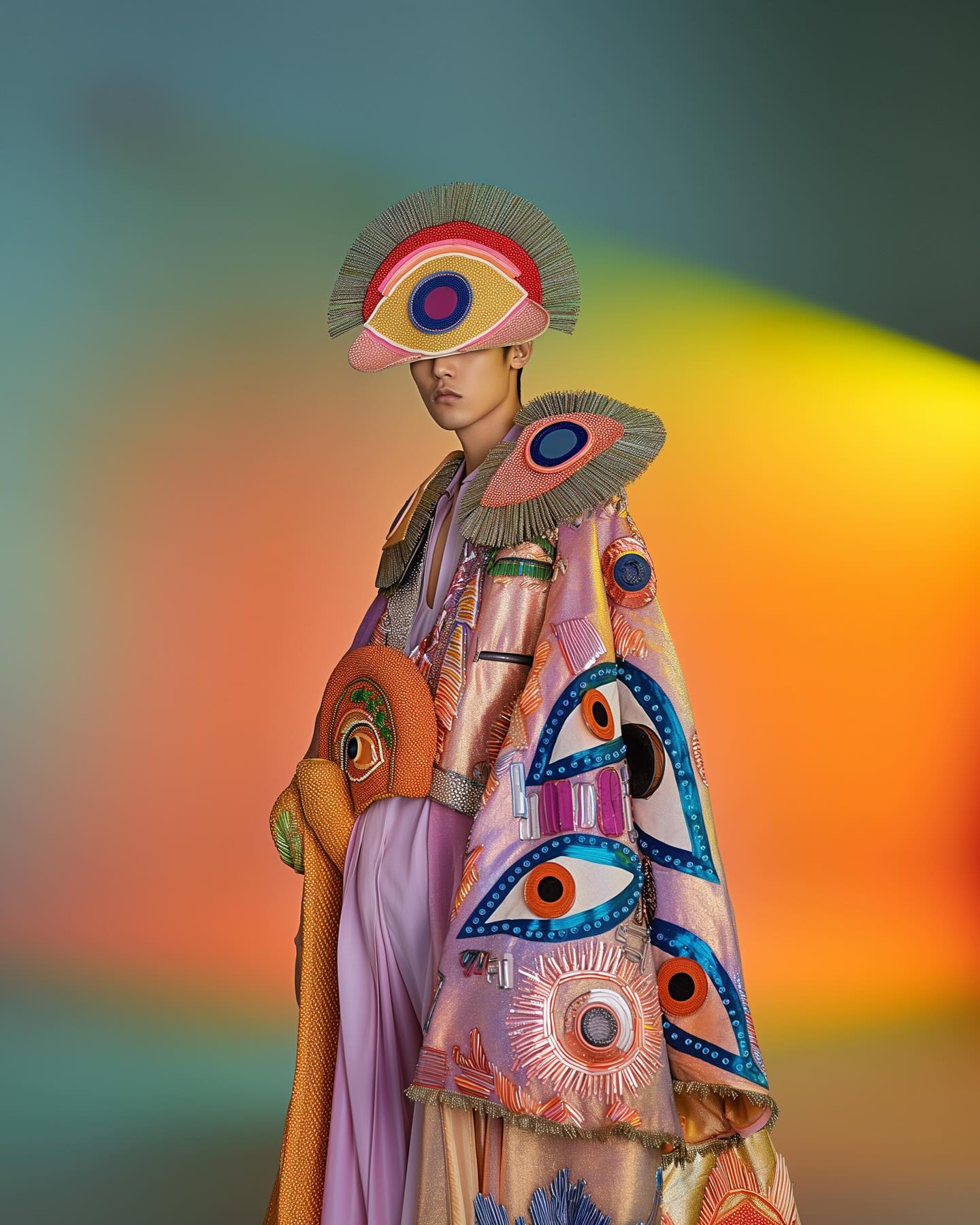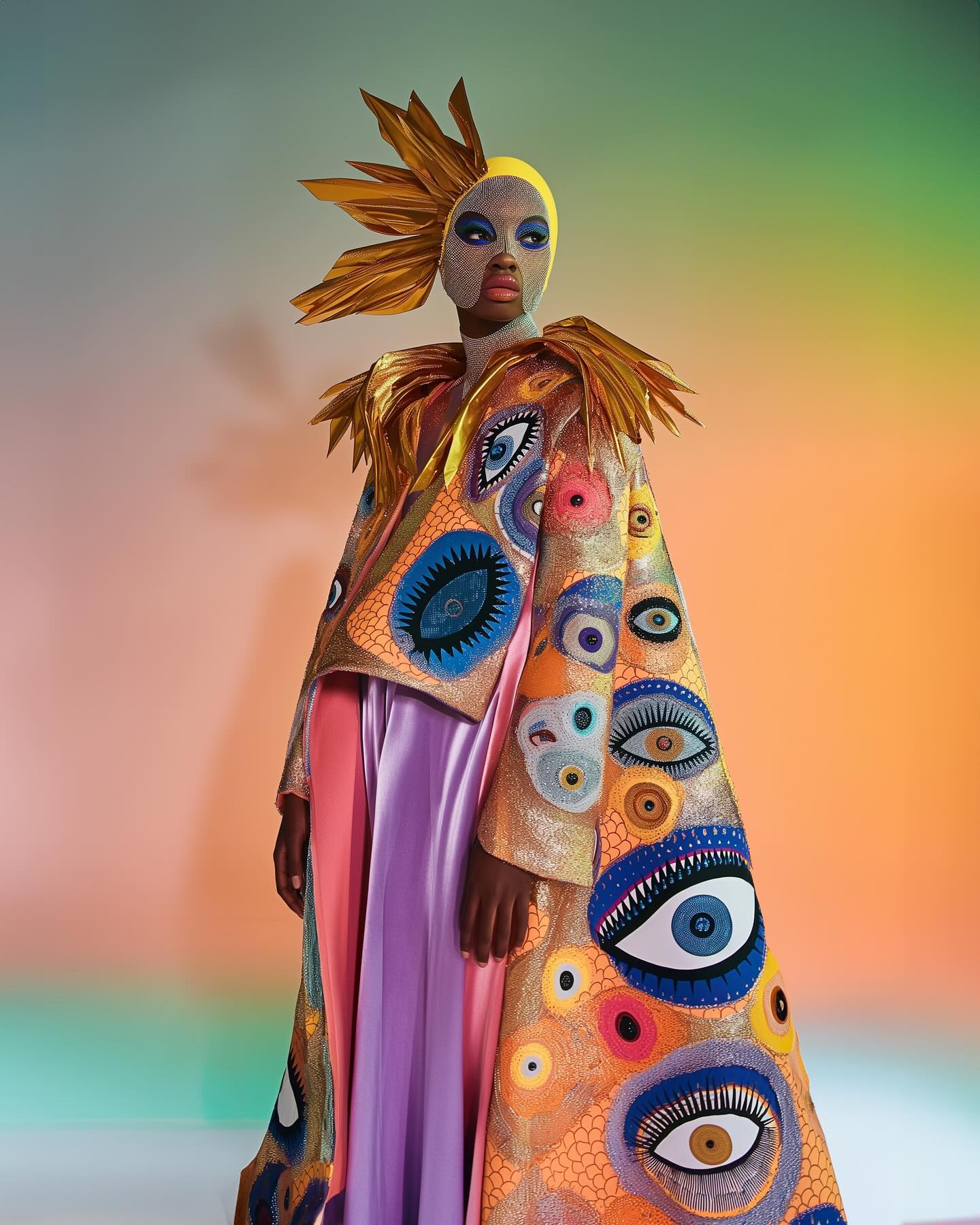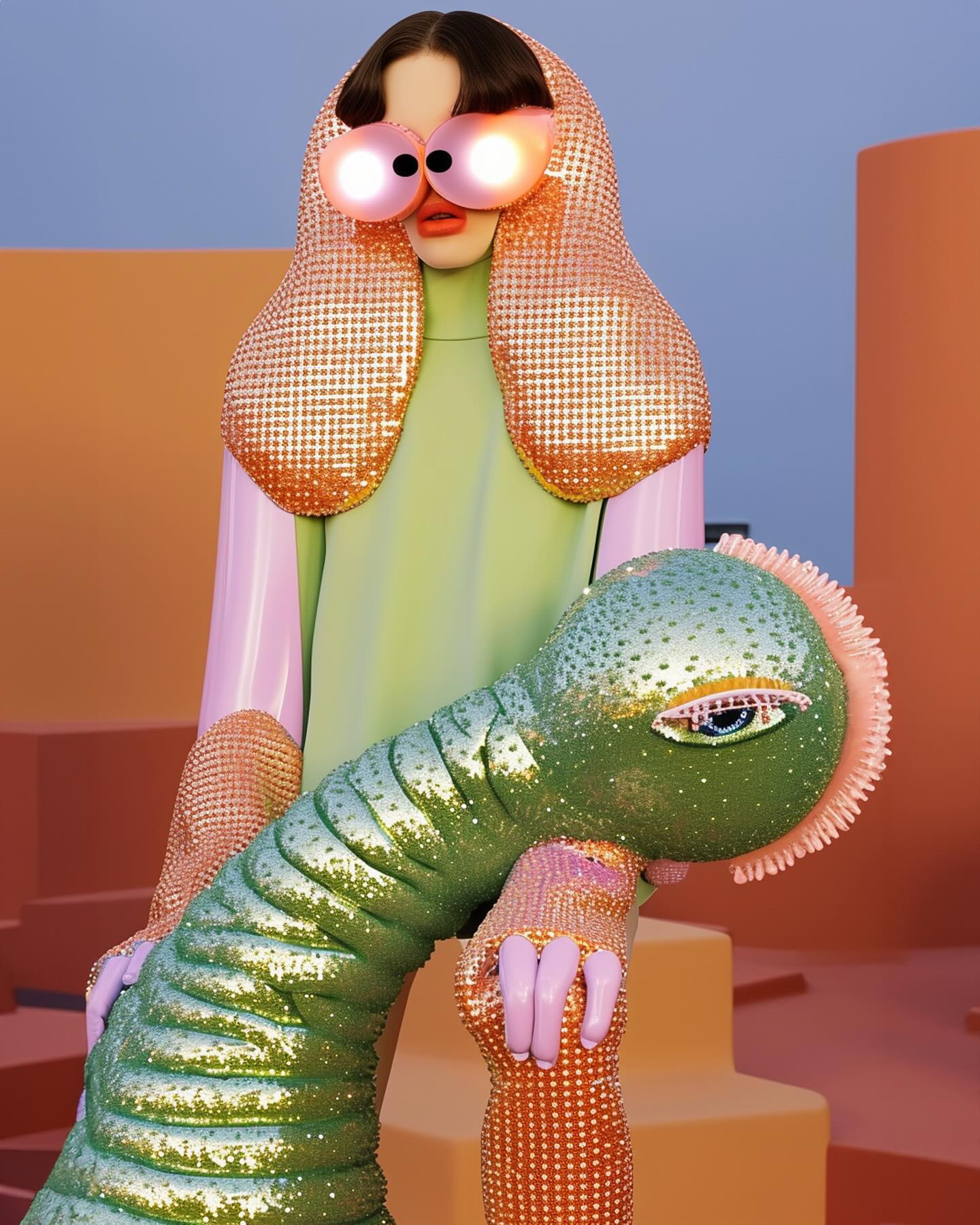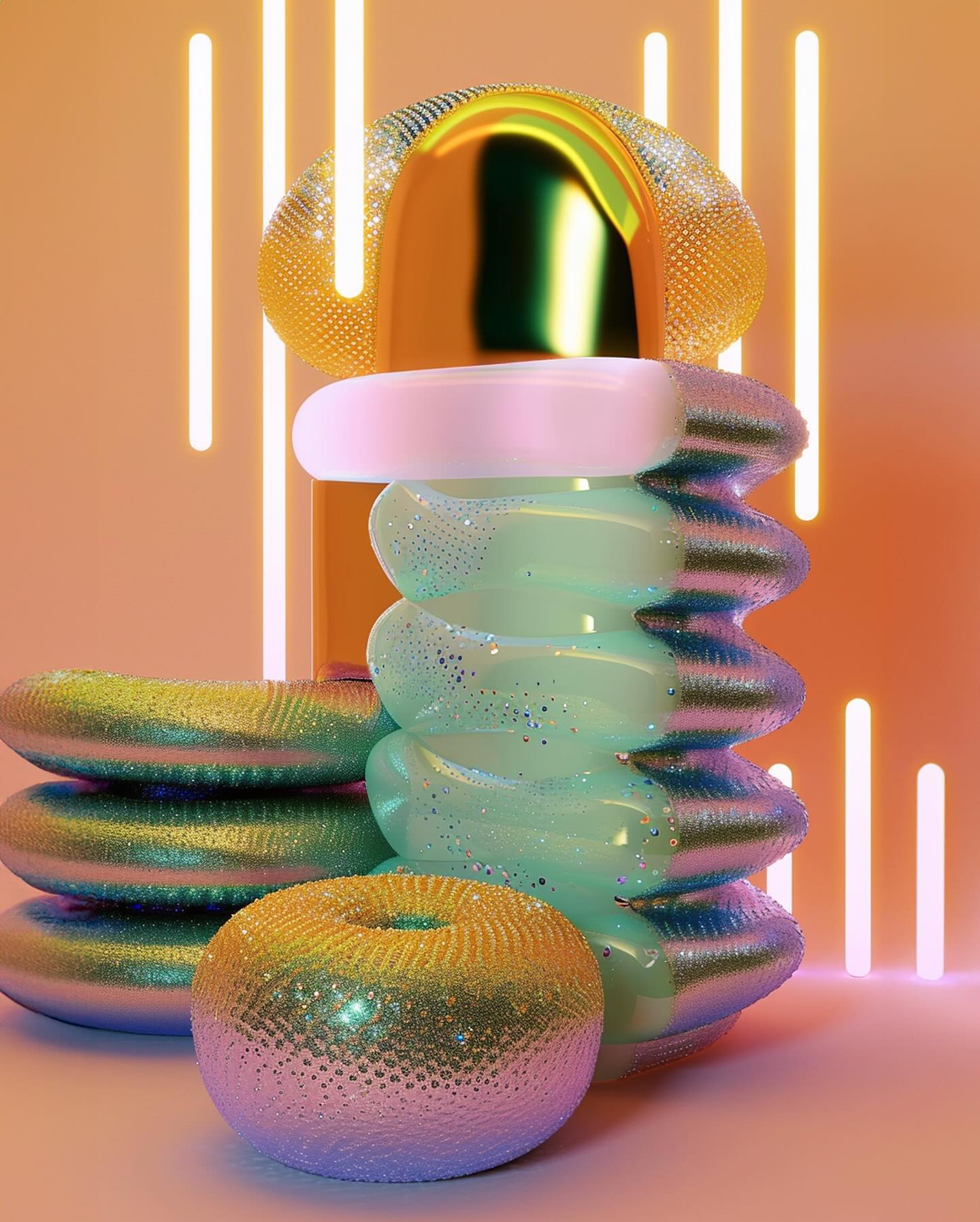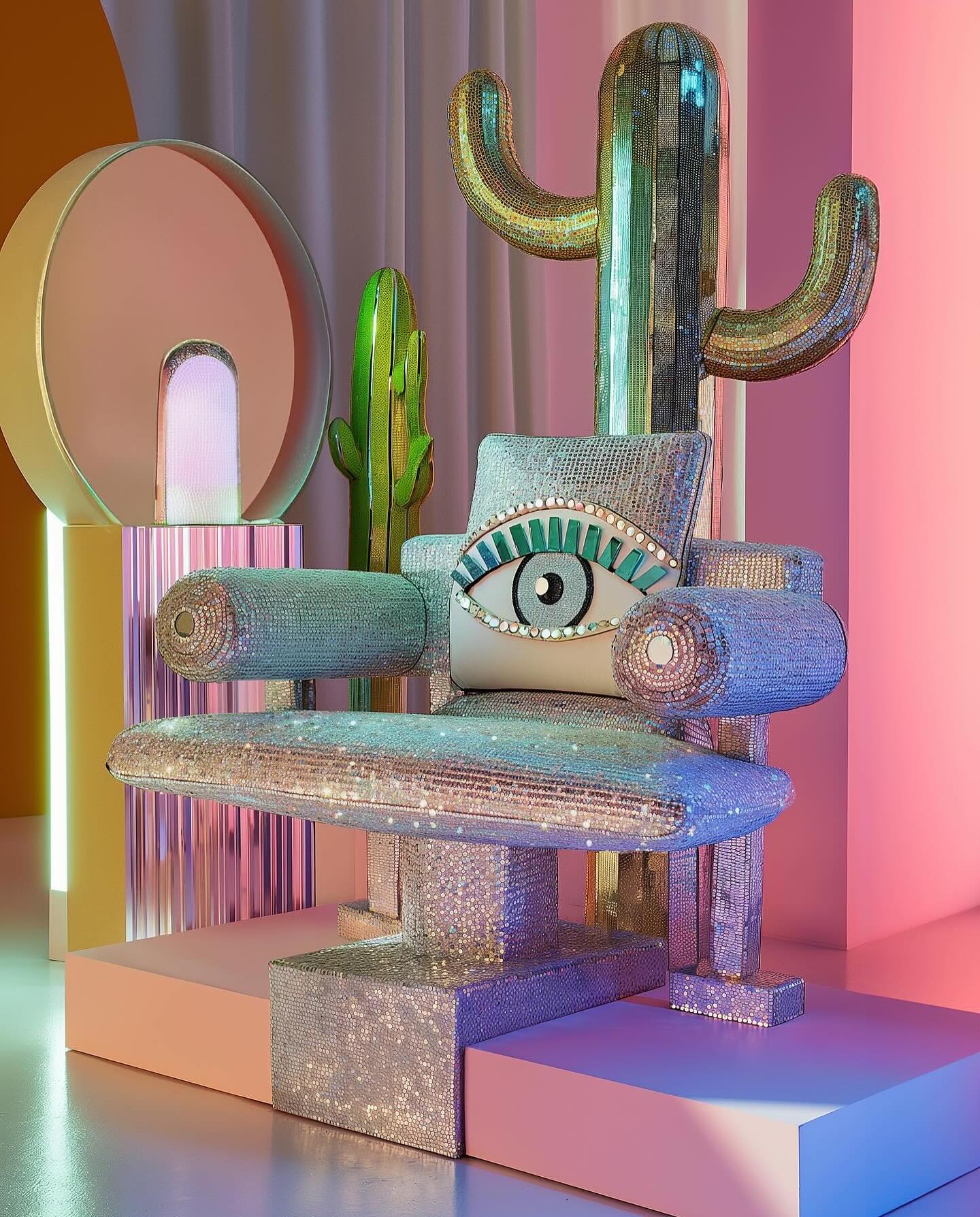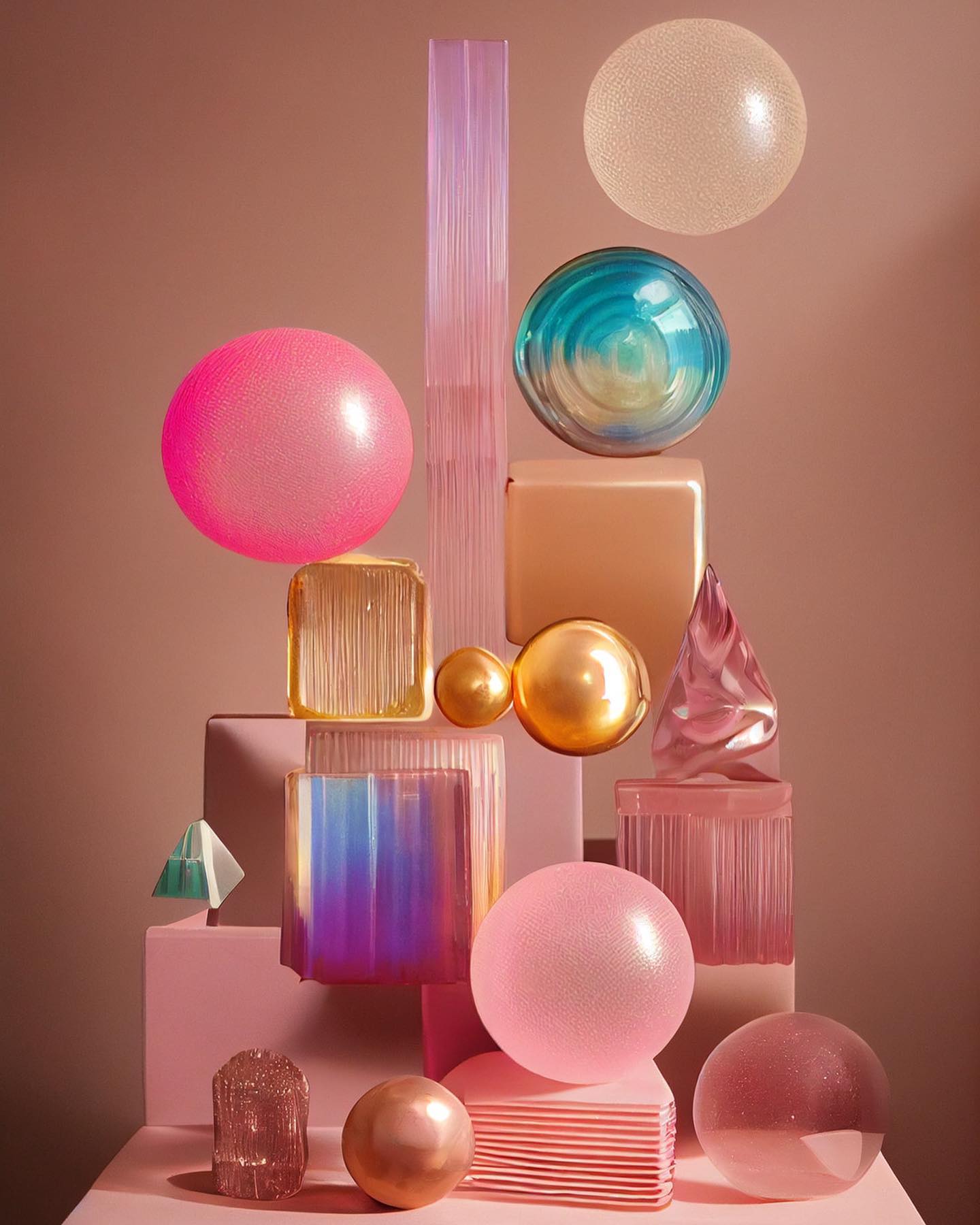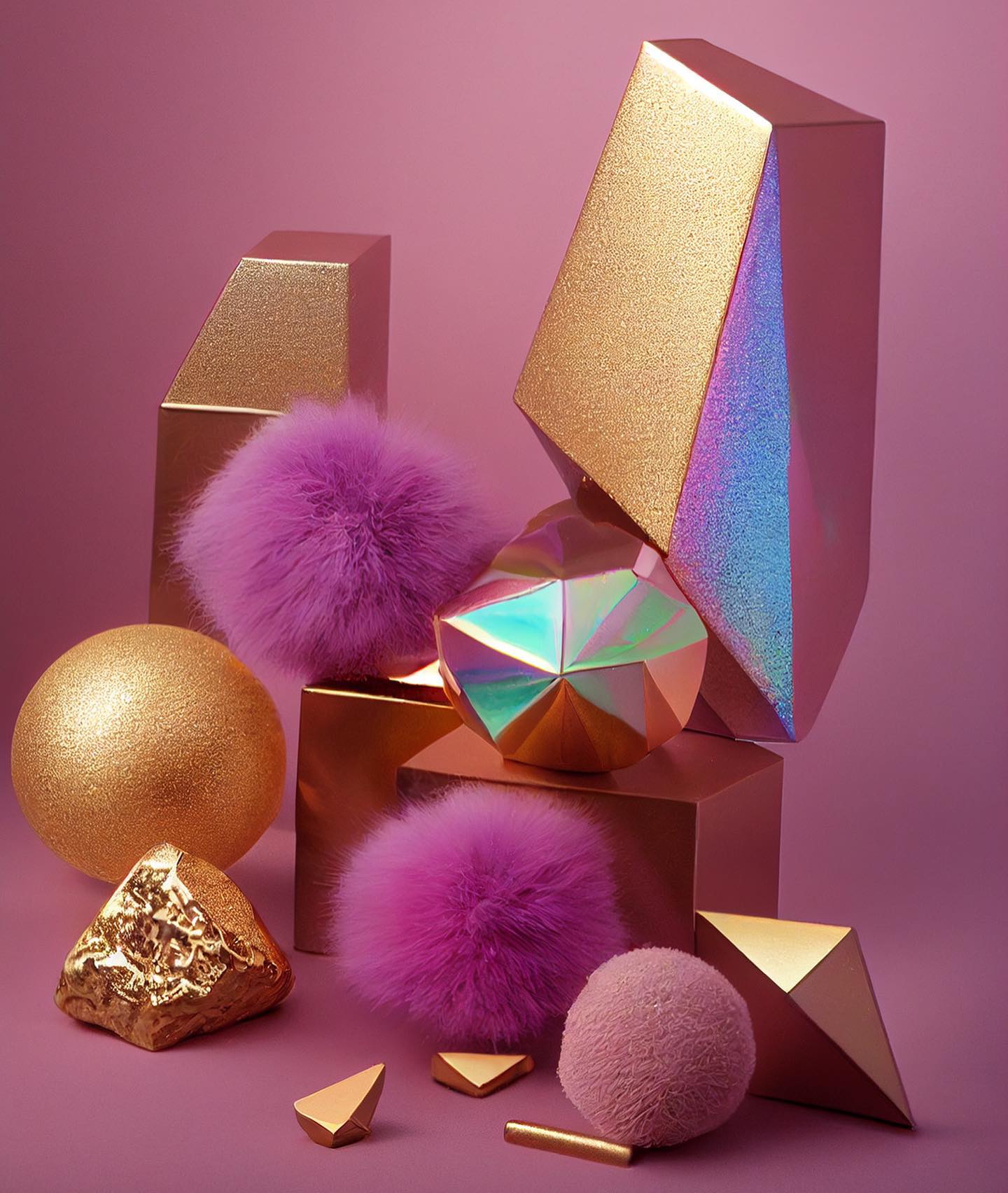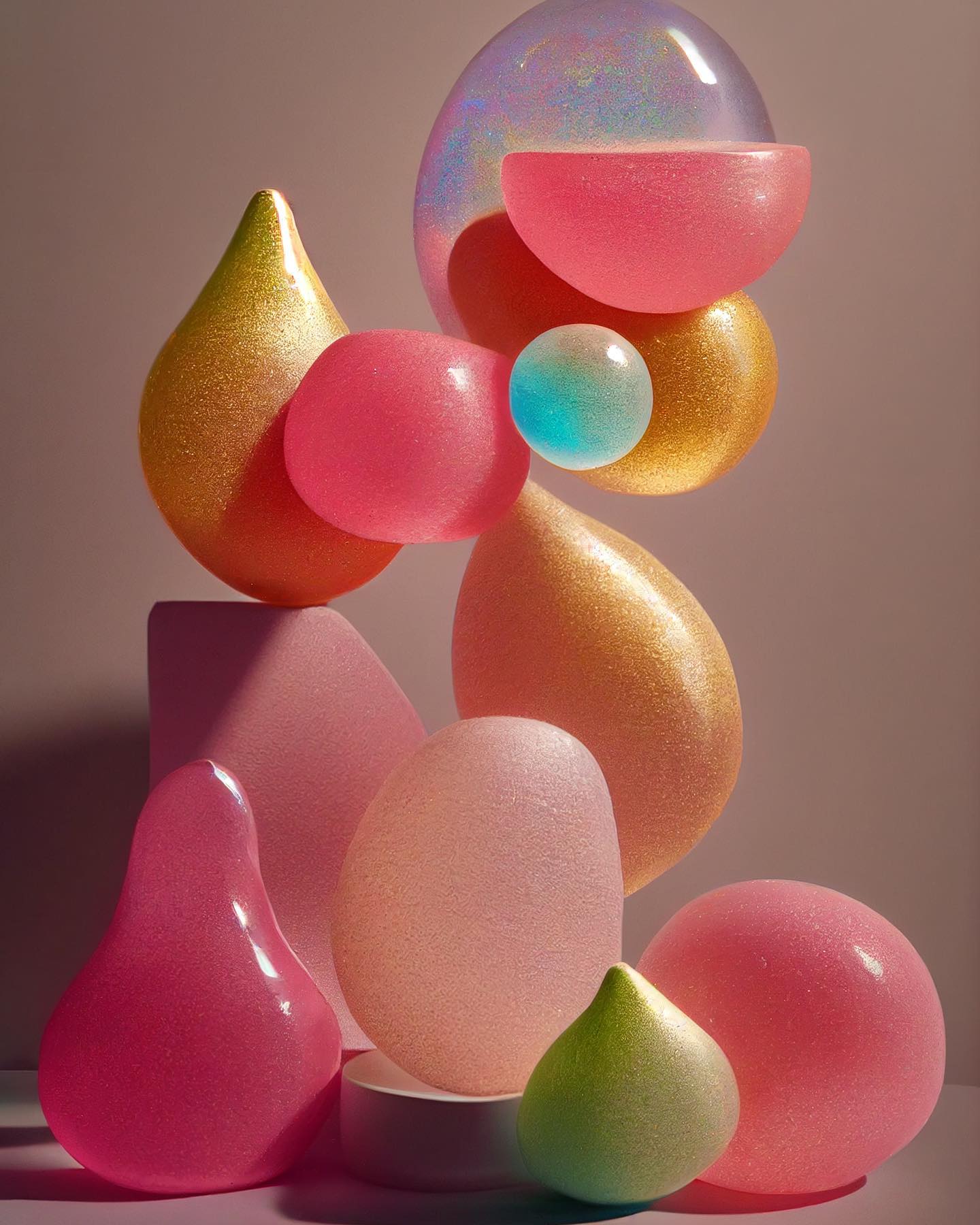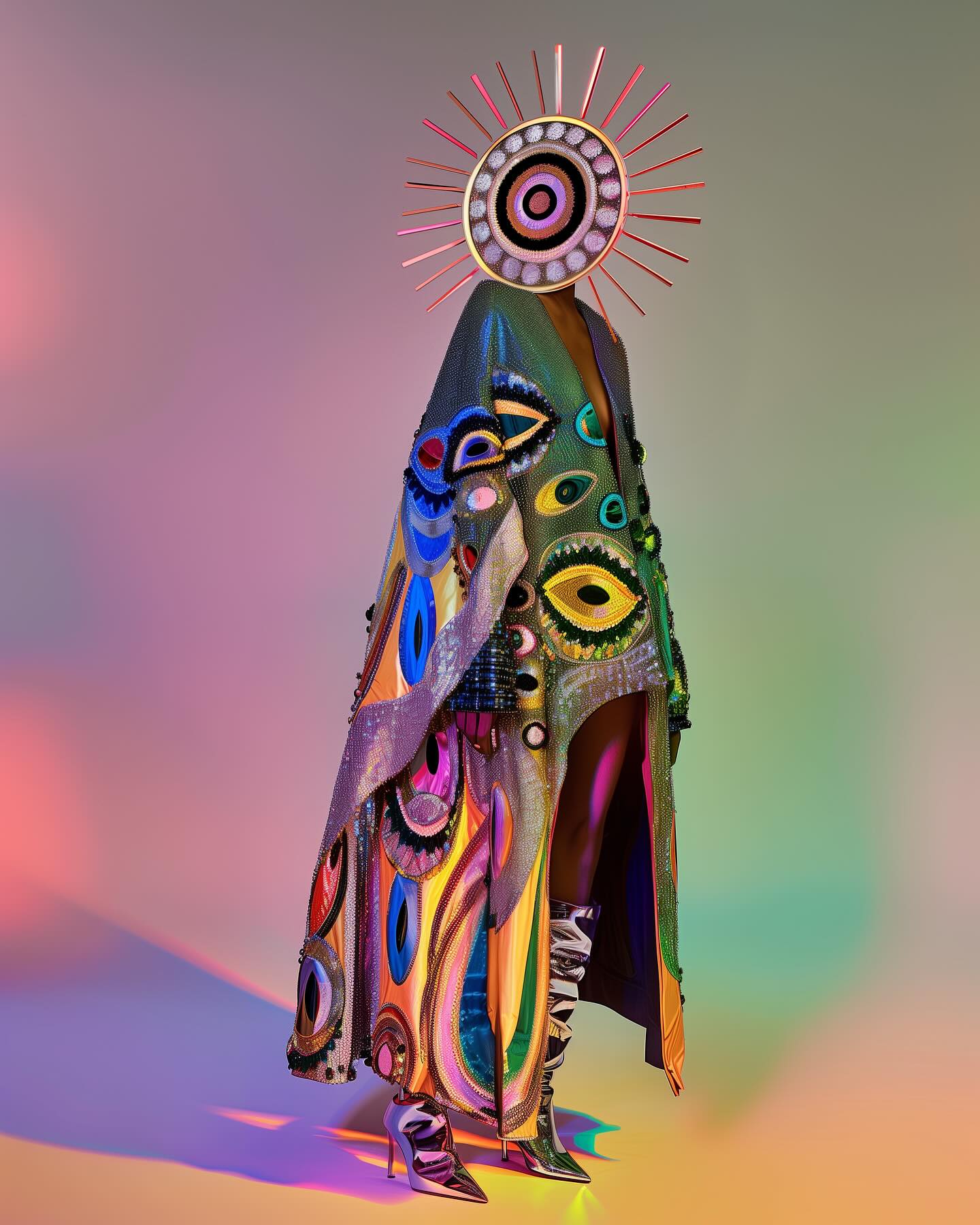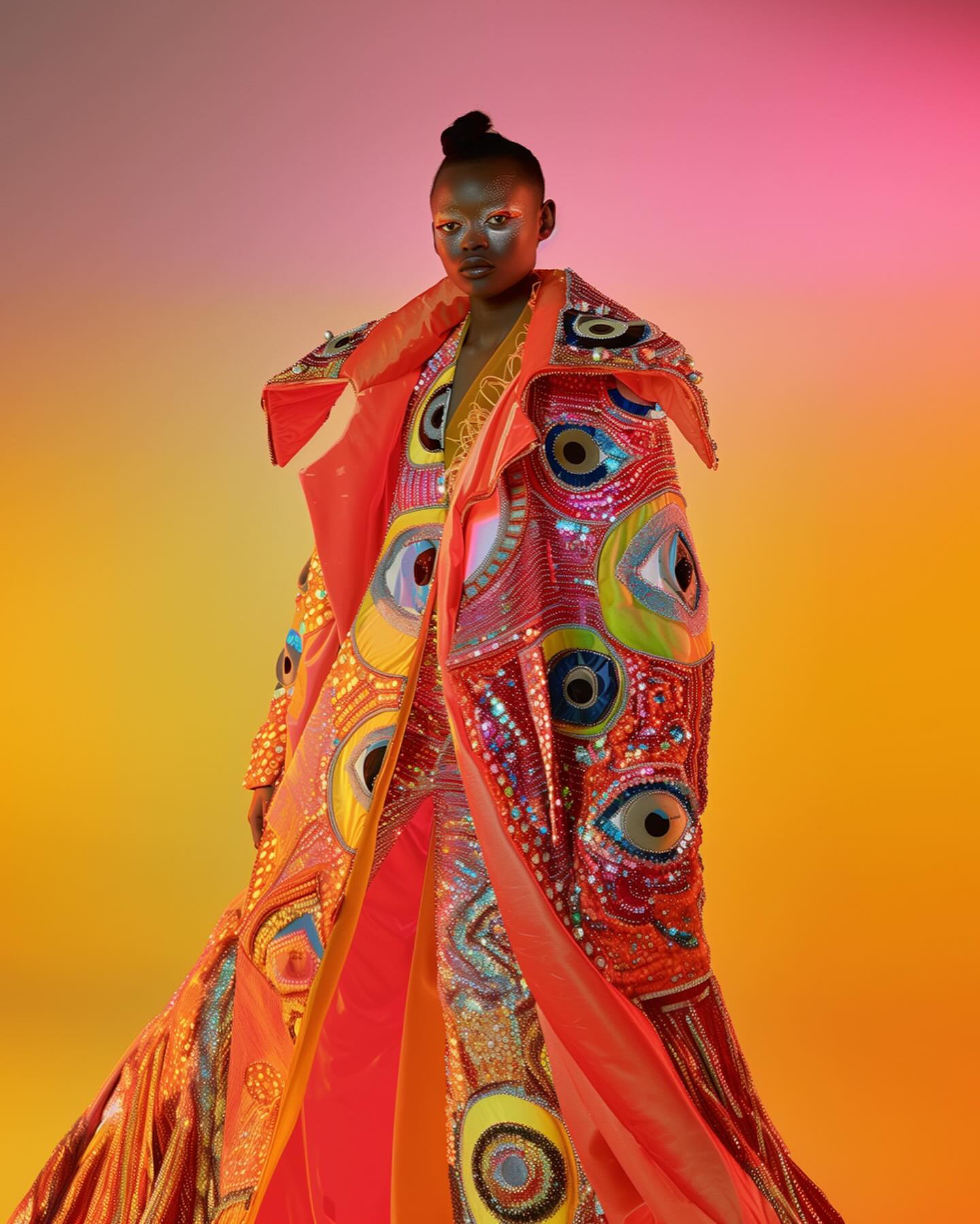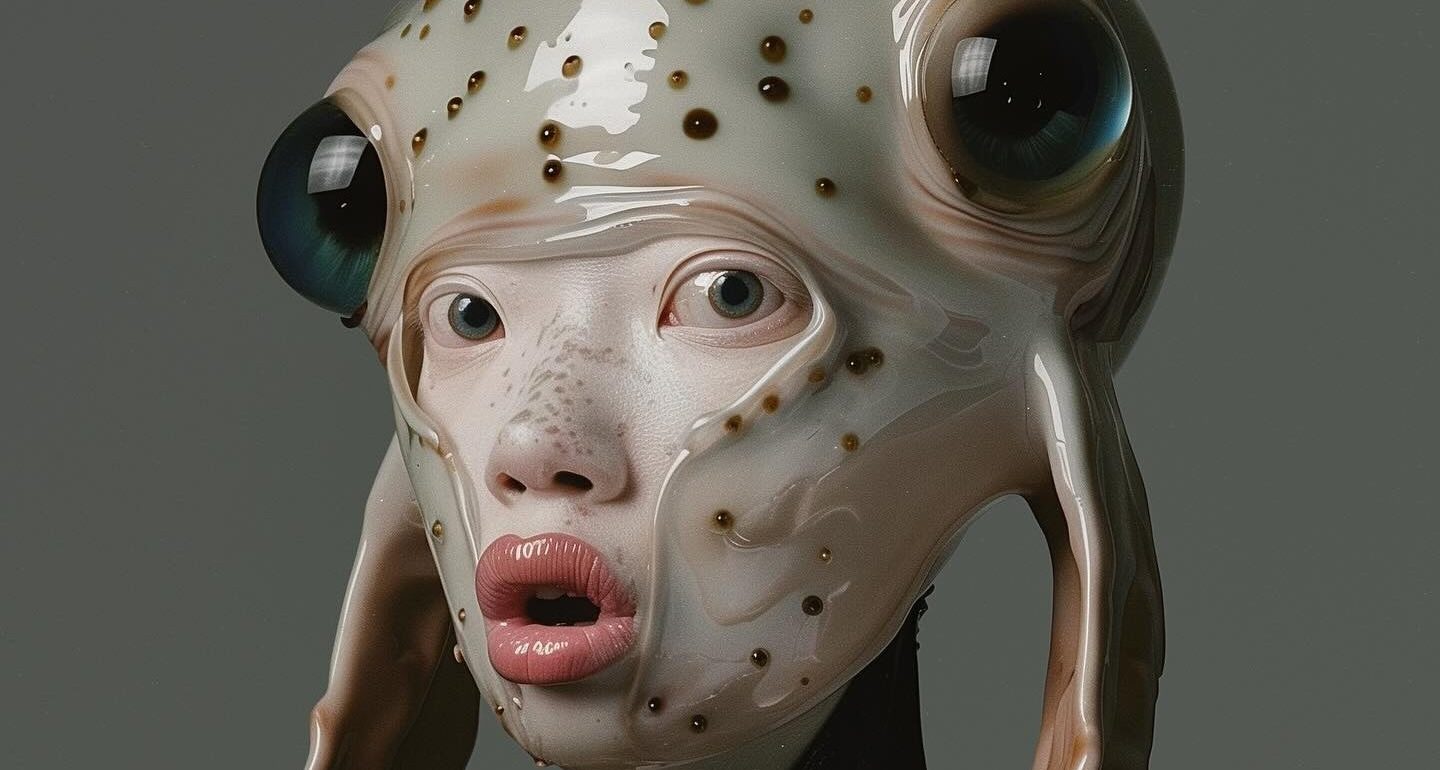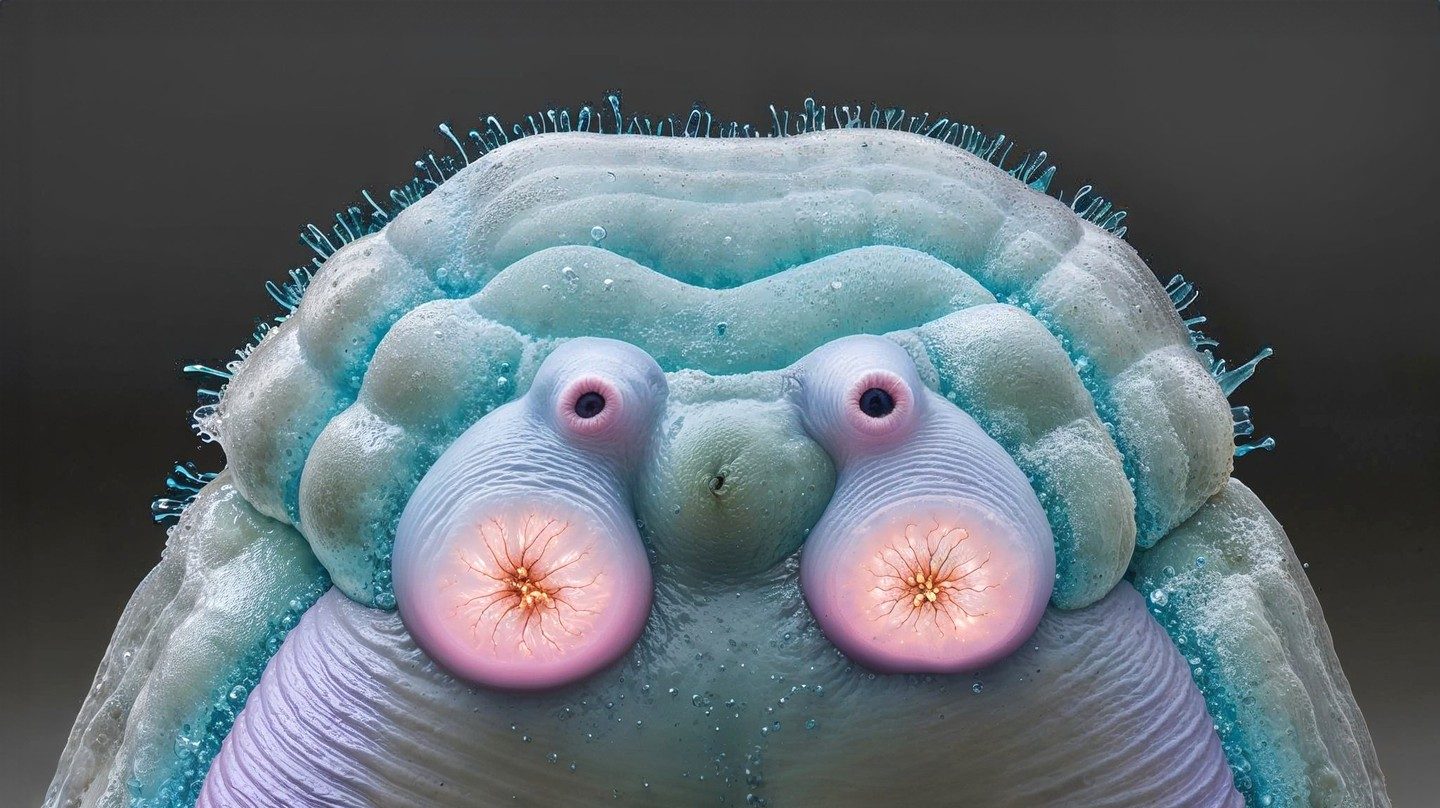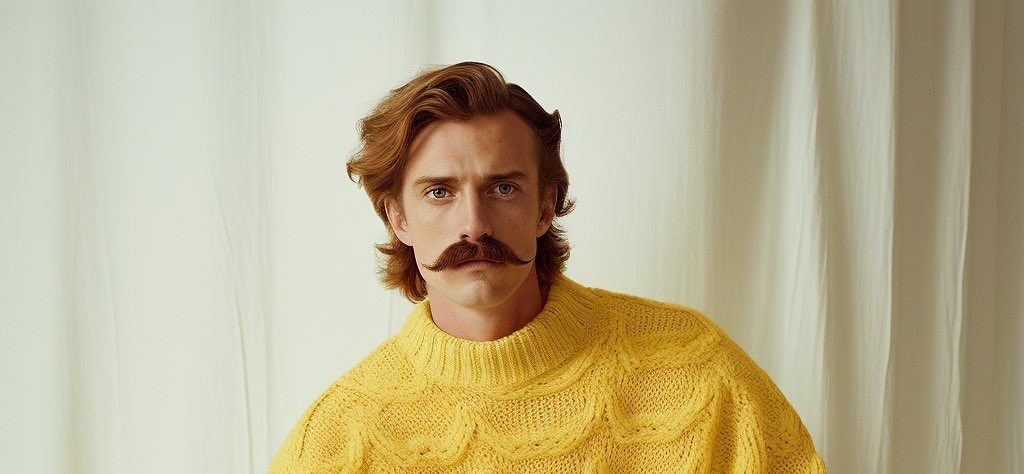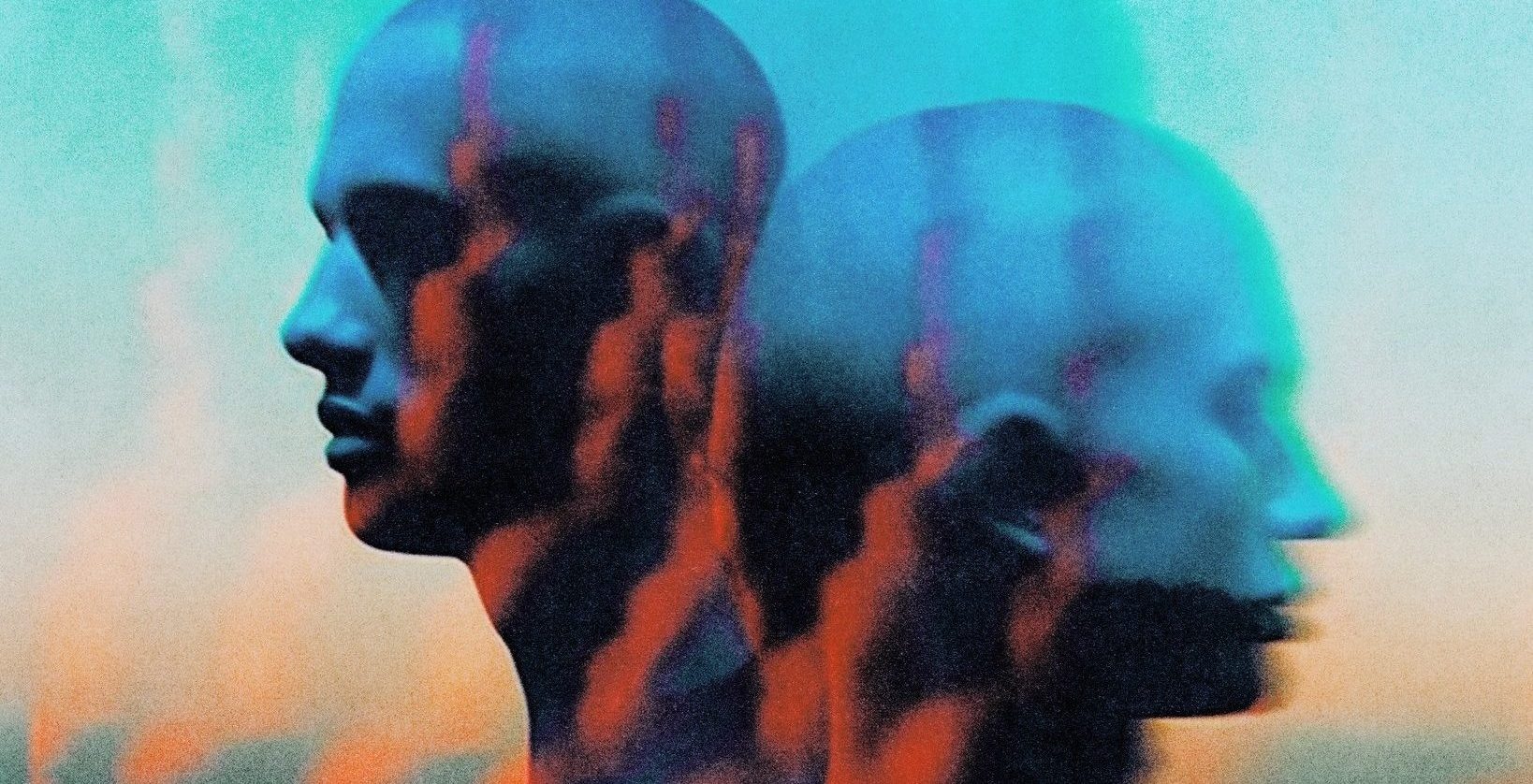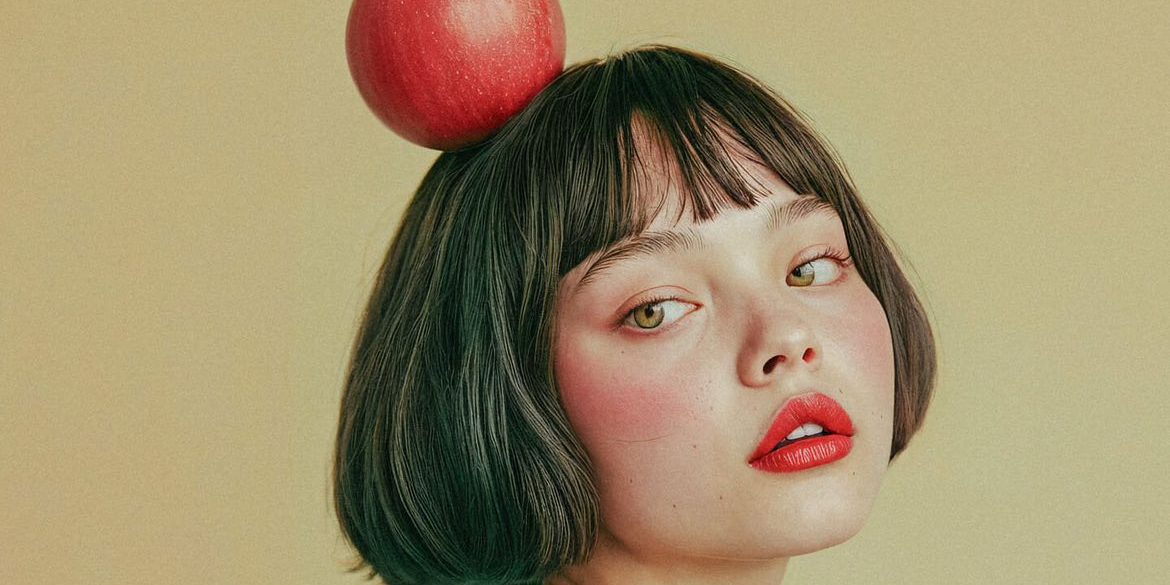Could you share a bit about your creative background?
I have been a graphic designer, jewelry designer/ goldsmith, and photographer. I have a BFA in Spatial Art with an emphasis in Jewelry and Small Metal Arts. I founded and ran a jewelry line for a decade.
During the early pandemic, in the absence of in-person art shows for my jewelry line, I focused my creative energy on photography. At the end of 2020, I decided to close my jewelry business to live a location-independent lifestyle as a nomadic commercial and fine art photographer.
When Midjourney was released to the public in 2022, I created an account and began obsessively creating with AI. I now split my time between photography and AI.
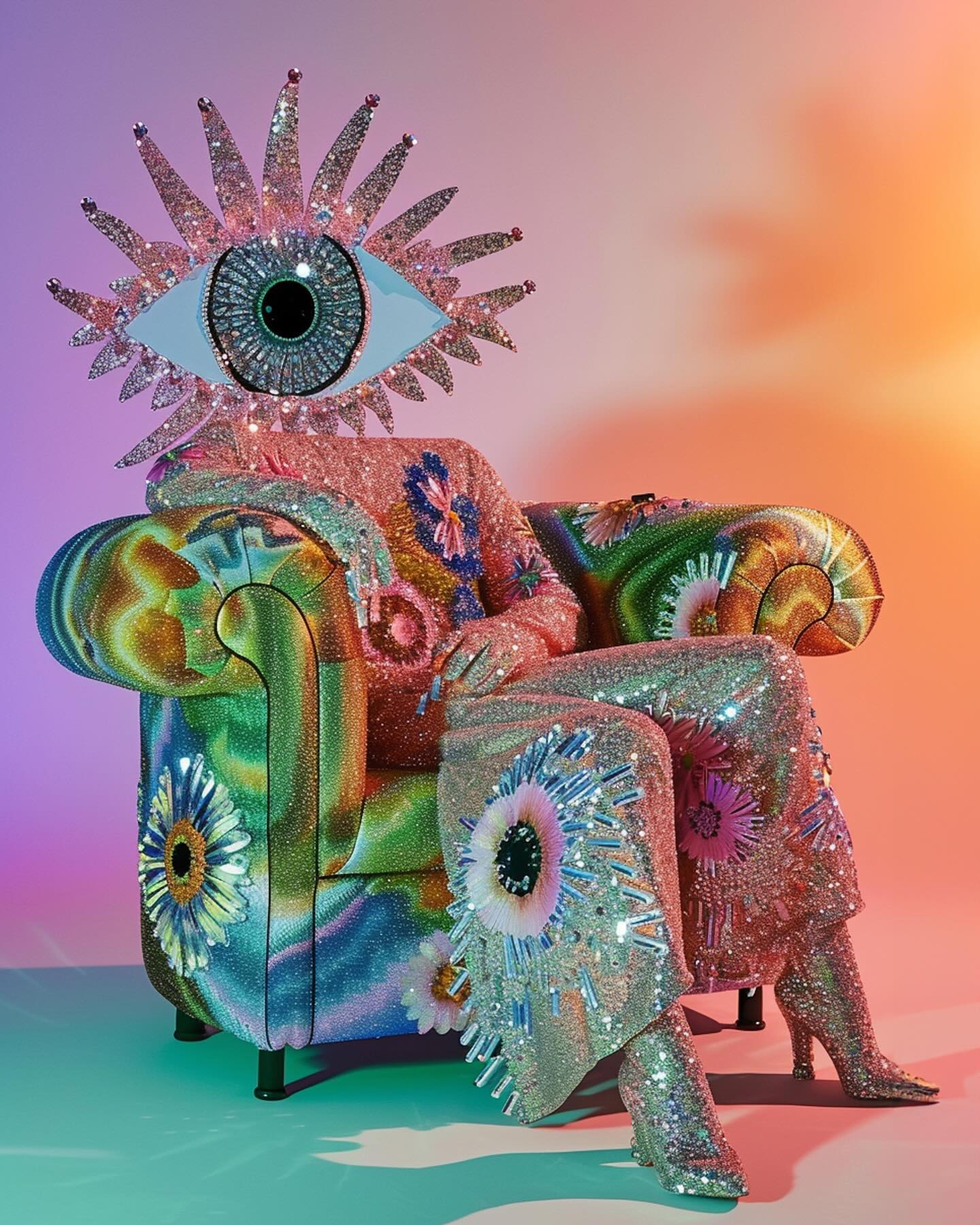
What led you to explore AI as a tool in your artistic repertoire, and what was your initial reaction to its capabilities?
As soon as I saw early AI-generated images in the news, I knew I wanted to explore the possibilities!
I now feel like the truest, deepest form of my creativity has been released because of my work with AI.
It’s so fun to think about the world untethered to physics or real-world resources.
I can create sculptures and jewelry without needing a studio to store my tools and materials. I can create elaborate photo sets without having to lug around lights and coordinate with a team. It’s very freeing.
My first works were still lifes in Midjourney v3 in September 2022. Though they were painterly and lacked a level of realism, I loved them so much. I was hooked immediately!
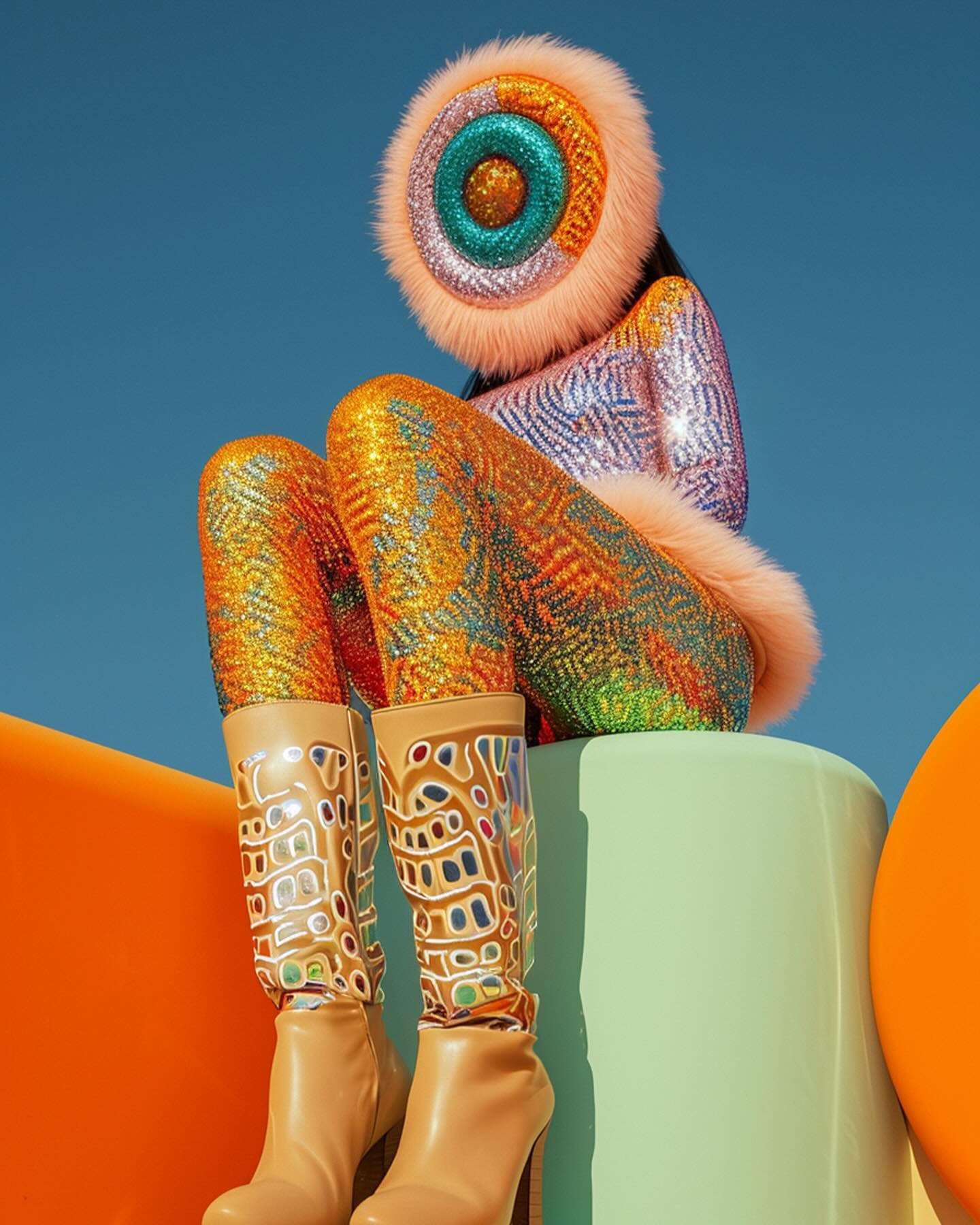
Can you walk us through your creative process when using AI, from concept to final product?
It starts with a question about materials. What would this thing look like in that material? Or what would multiple materials look like if they were combined together?
I think of the process to explore these ideas as a long conversation. The AI and I are increasing the specificity of our conversation with each step – both adding ideas as we iterate. This conversation can last hours, days, or in some cases, weeks.
The final images comes from a trail of, I don’t know, 100 or more earlier variations. Each variation, or varied region, is a sentence in the conversation, inching me closer to revealing the final vision. The final step is using Photoshop to clean up small details and incongruences.
How much retouching do you typically need to apply to your images, and what are the most common reasons for doing so?
I retouch almost all of my images, but usually not a ton. Midjourney does not excel in tiny portions so I use Photoshop for anything that would be too small to select in “vary region.” It’s often weird lips and teeth, gaps or glitches in materials. I will sometimes composite multiple variations, for instance, taking a model’s face from one image but a dress from an alternate variation.

Could you share some ideas to incorporate into prompts that consistently yield impactful results?
When it comes to textures, I think Midjourney responds better to image references than descriptions.
Build up a library of textures that you love either through your own photos, Creative Commons, or by taking the time to create unique generated textures. If you want a sequin gown, for example, prompt “sequin gown” but also include an image of the type of sequins you are envisioning.
Don’t be afraid to utilize the “vary region” tool. I have great results changing textures and materials by adjusting individual regions. Midjourney will want to make the selection cohesive with the rest of the image so you don’t have to go into too much detail to get great results.
Be clear and concise about what you want and avoid filler words like “photorealistic.” Set your realism in the settings instead.
Is there a meaning for the eyes in a lot of your images?
The eye is tied into my own story. My husband and I were fully nomadic for 3 years but we fell in love with Athens, Greece and moved here last year. We are now spending half the year here and half the year traveling. Neither of us had friends or family in Greece but for some reason, we both felt more at home here than anywhere else we had ever been!
The evil eye is everywhere here. You see it in all the souvenir shops and on bags and jewelry. I incorporate it in my work as a connection to my chosen home.
Is there a specific type of material or texture where you find Midjourney excels in its representation?
Human skin has vastly improved in Midjourney version 6 from earlier models.
It’s also great at sequins, gemstones, elaborate print textiles, and creatively mixed textures!
Have you incorporated AI-generated imagery in commercial projects for clients? If so, how was that experience?
Yes, I have! It’s a very exciting time and I am working with clients in fashion, products, and music.
Sometimes it’s a hybrid photo/AI job that requires compositing the AI into existing photos. I am also doing some straight AI work!
How do you think AI will affect the world of professional photography in the near future?
Gen AI is already fully integrated into Photoshop and it has drastically cut down my editing time.
I can’t imagine going back to the old way!
In terms of tools like Midjourney, the creatives who use them and use them well will have a competitive advantage.
There will always be a market for traditional photography but I do think it will be harder for those who refuse to adapt to incorporating this technology into their workflows.
Has working with AI influenced the themes or style you use in your photography?
Yes, it has and I look forward to exploring more hybrid work. I find creative still lifes and product photography the most exciting right now.
I love thinking about shooting products or fashion in a simple set that will come to life with AI elements after the shoot.
What resources or communities would you recommend to artists who are interested in exploring AI in their work?
I was such an early adapter to Midjourney, I never took a classes or tutorials because they didn’t exist yet! I can only speak to my own process which has been an ongoing and always fascinating process of trial and error.
Instagram has an amazing community of AI artists who are so supportive of one another! I’m there everyday marveling at what my AI friends have created.
There’s an ongoing conversation about ethics of the use of AI in creative fields. What are your thoughts on these debates?
Well, I certainly hope that artists are compensated if their work was used to train the models without their permission. I look forward to seeing how the legal issues are litigated and I hope that a fair agreement is reached.
In terms of using the programs, it’s more important than ever to respect ownership of other’s work. Especially now that character refs and style refs are much more replicative,
the ethical best practice is to never use images that you have not been expressly given permission to use.
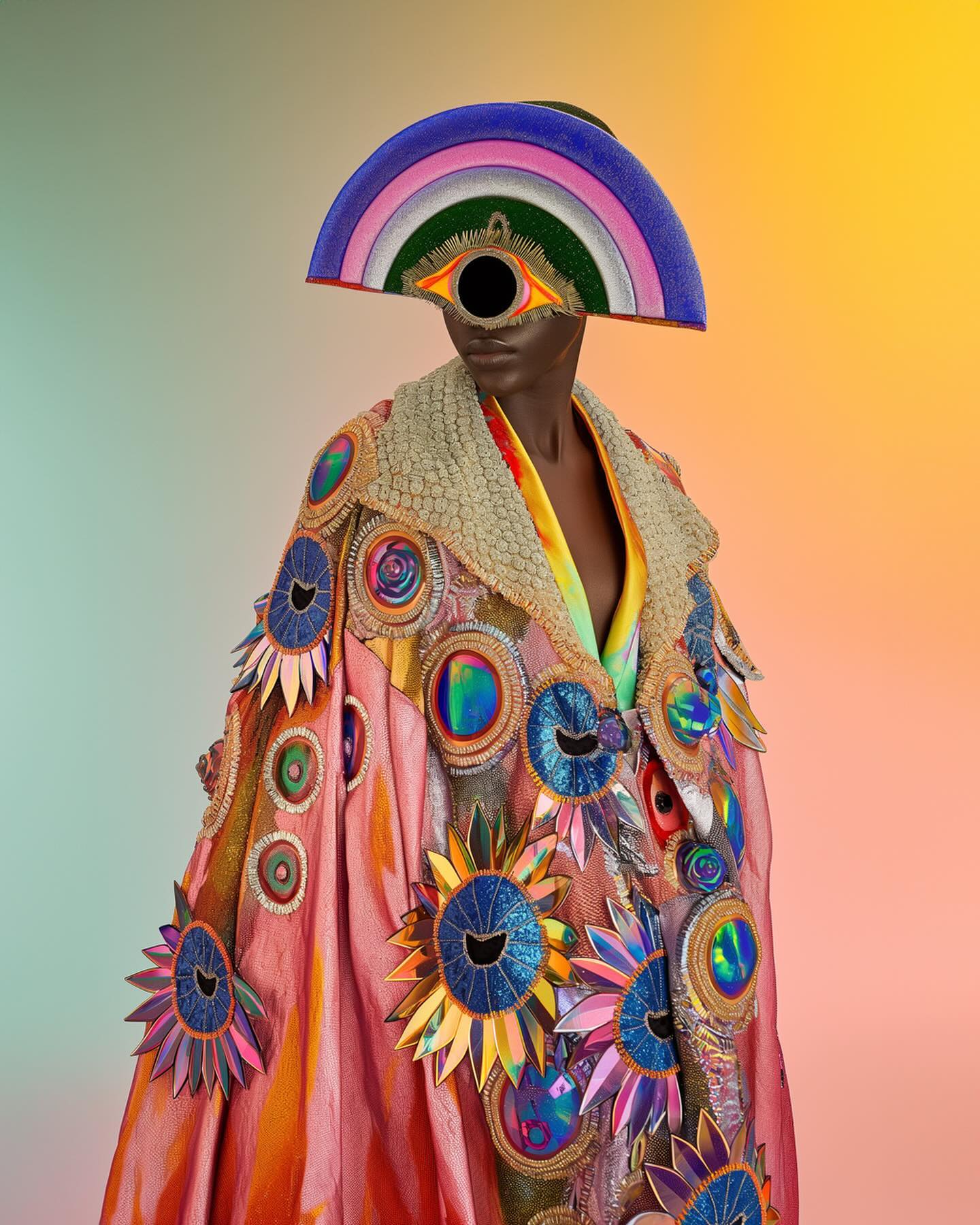
The Top 3
Top 3 words to describe your AI-generated work
Top 3 AI creatives whose work stands out to you
Top 3 improvements you wish to see in current AI tools
- Maybe it’s a pipe dream, but it would be nice if there was a Midjourney AI tool to read image inputs (like YouTube does with music) to block image that are being used without permission.
- Highly-controlled lighting adjustments that could be used to create realistic photography sets.
- I think we’re all excited to see what’s next with video! But maybe a stop motion element would be fun too!
Top 3 advice for creatives considering starting to experiment with AI
- Keep iterating! Push every concept beyond where you think you should stop. That’s where the magic happens!
- Get to know the “perspective” of the AI you are using. Start with a one word prompts and see what it creates with minimal direction. Add terms slowly and monitor what changes.
- Try toggling through the settings with the same prompt and again, study what changes. Take notes on your favorite outputs so you can get your preferred level of realism and stylization correct in the settings without having to use stylization words in your prompt.
A massive shoutout to Becky for generously sharing a wealth of practical advice on crafting stunning AI images. Thanks for an incredible conversation filled with insights, tips, and a peek into the future of creativity where AI plays a starring role.
Here’s to the sparkly, colorful, and playful future of AI art!
 ☰
☰
